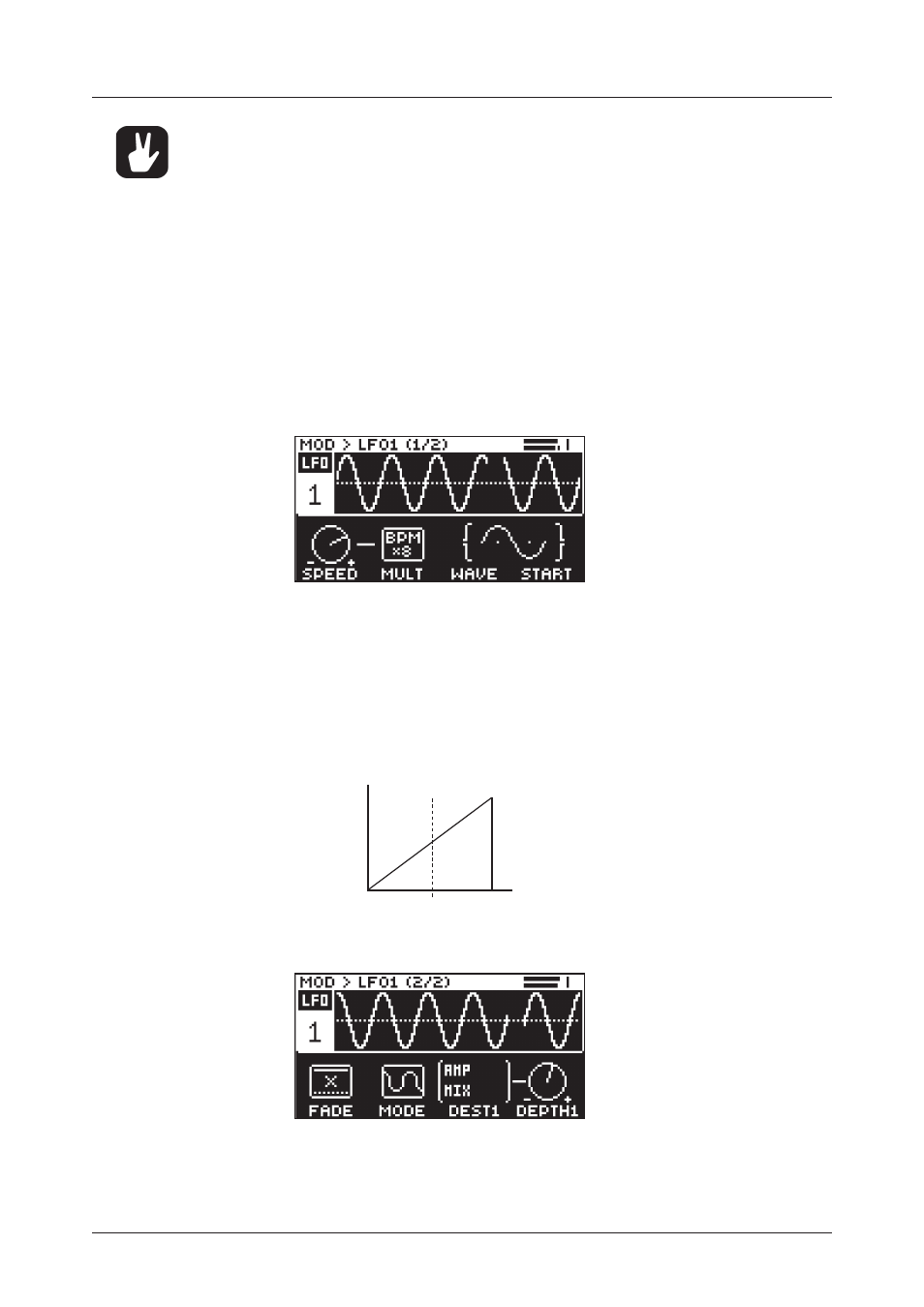Elektron Analog Heat + FX Hybrid Digital/Analog Sound Processor User Manual
Page 35

7. PARAMETER PAGES
35
With BASE set to 0, the envelope follower filter functions as a low pass filter with WIDTH
adjusting the frequency range.
With WIDTH set to 127, the envelope follower filter functions as a high pass filter with
BASE adjusting the frequency range.
If you want the envelope follower to trigger specifically on different types of drums in a
loop (for example the hi-hats), this filter is very usable to isolate these elements.
BASE
Sets the base frequency of the filter detection.
WIDTH
Sets the frequency width above the base frequency.
DEST1
Sets the modulation destination of the envelope follower. For more information, please see
“APPENDIX B: MODULATION SOURCES AND DESTINATIONS” on page 44.
DEPTH1
Sets the amount of how much the envelope follower affects the modulation destination. A
negative value gives an inverted modulation.
7.4.3 LFO1 PAGE 1
SPEED
Sets the rate of the LFO in relation to the internal or external tempo. It is synced to BPM if one
of the “BPM x” settings are selected in the MULT parameter. To sync the LFO to straight beats, try
settings of 16 or 32. The value of this parameter is bi-polar. (The LFO shape can be played backward
by using negative values.)
MULT
Multiplies the SPEED parameter by the set factor. (x) multiplies the current BPM. 1-2K multiplies
the LFO speed regardless of the current internal or external tempo.
WAVE
Sets the LFO waveform. (TRI, SINE, SQR, SAW, EXP, RAMP, RND)
START
Sets where in the LFO waveform cycle it starts when triggered. For example, if you set WAVE
to SAW and START to 64 it starts at the middle of the wave cycle:
Start
7.4.4 LFO1 PAGE 2
The LFO has three modulation destinations.
1. The first is set using the parameter
DEST1
. The amount of LFO modulation added to the selected
destination is controlled by the parameter
DEPTH1
. The first modulation destination can also be set